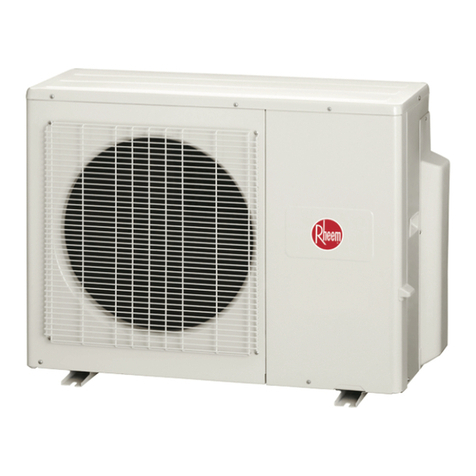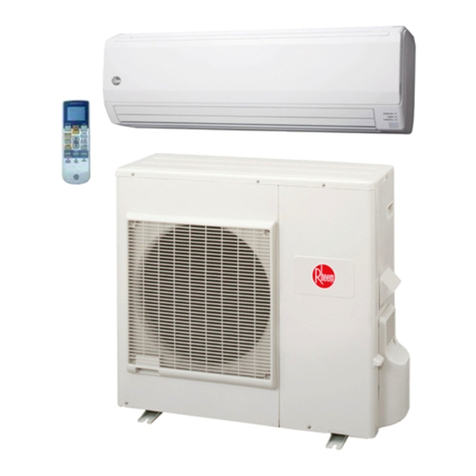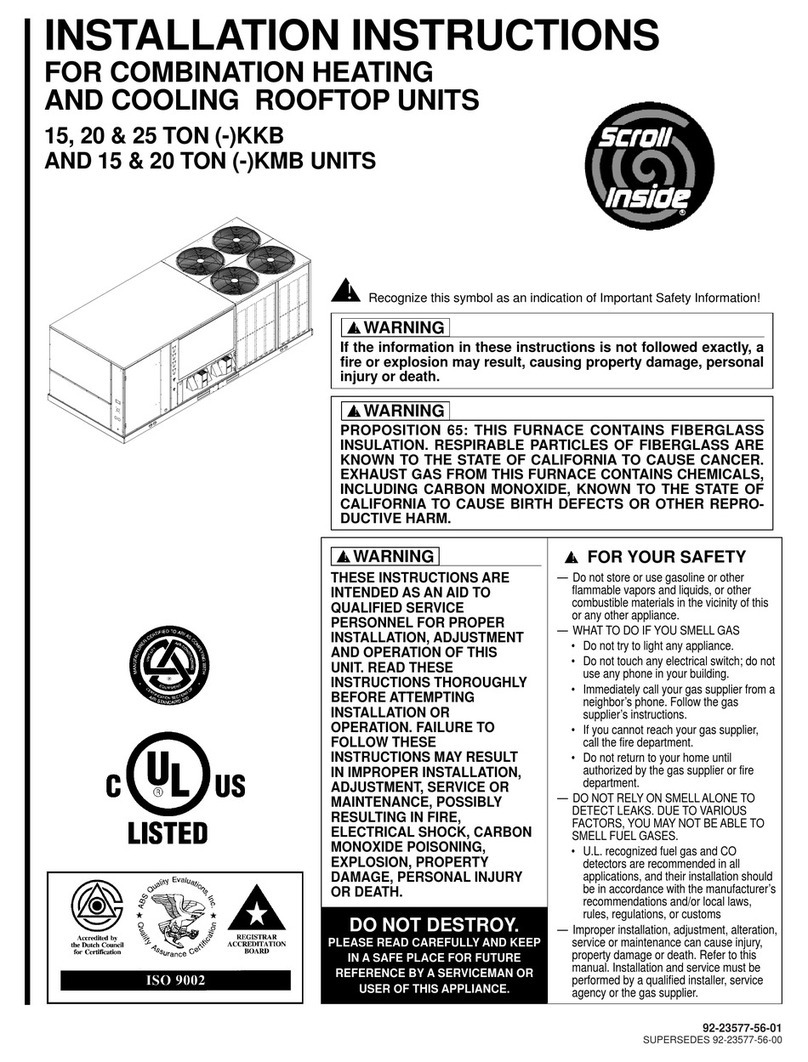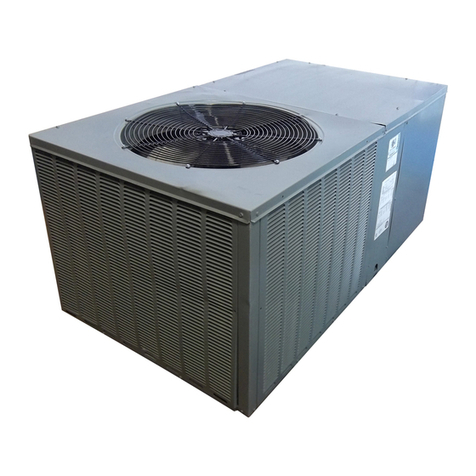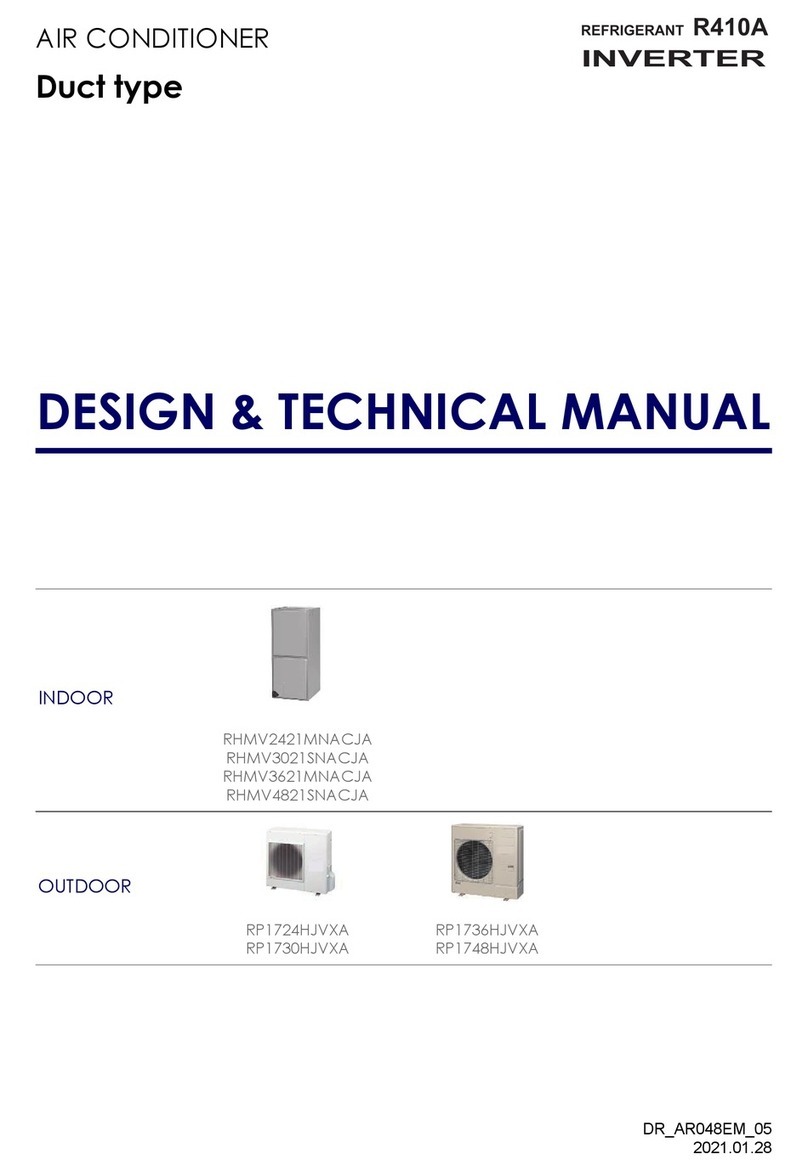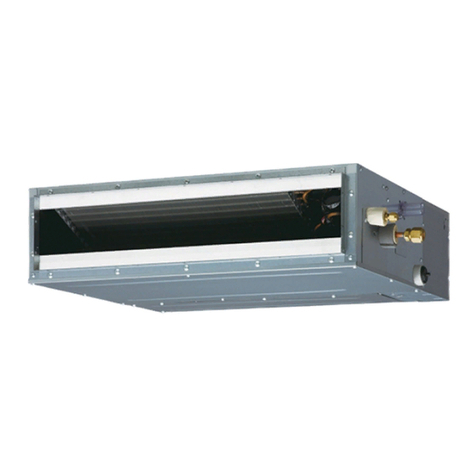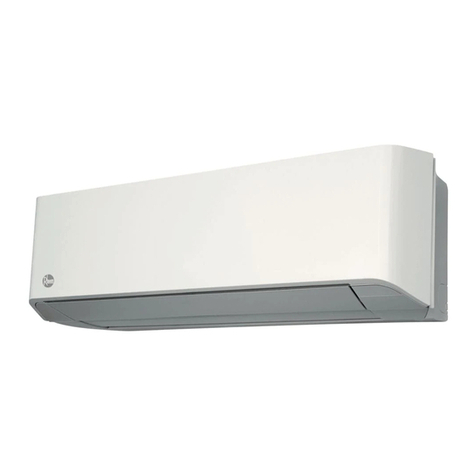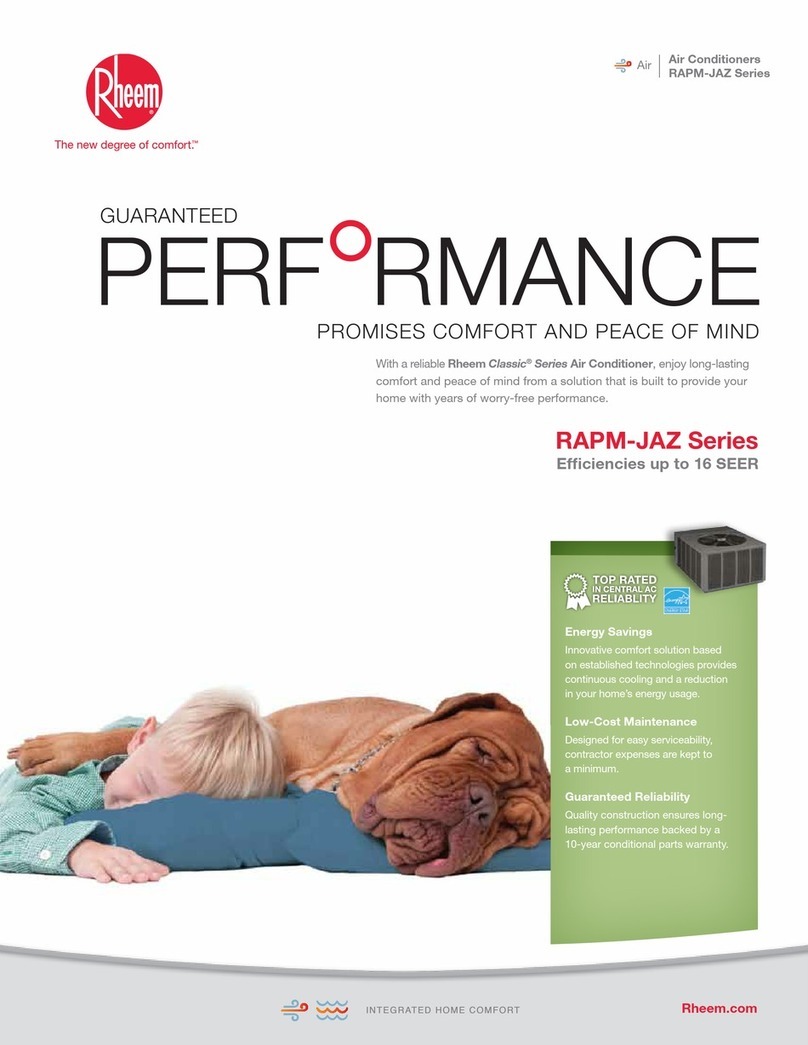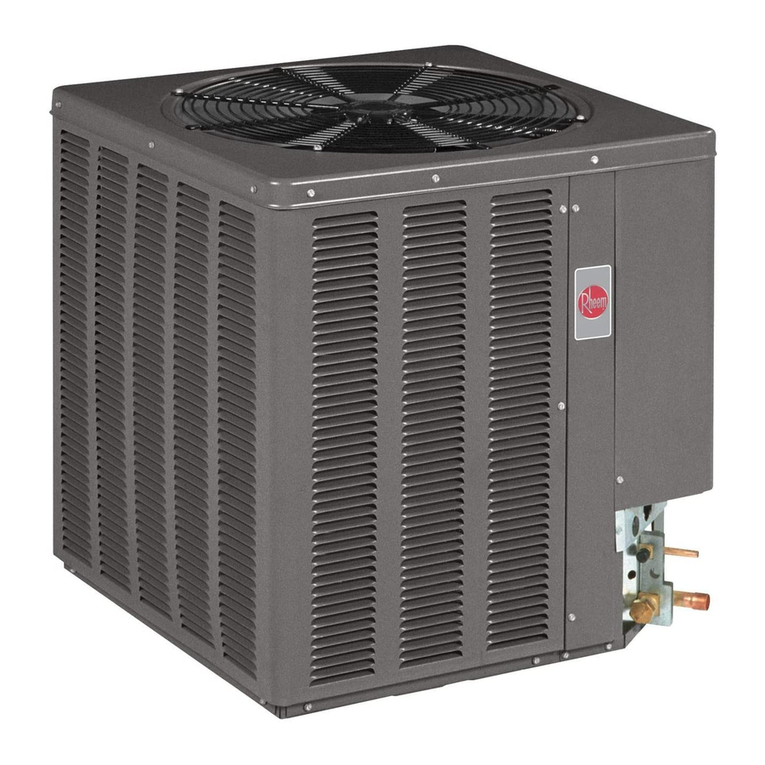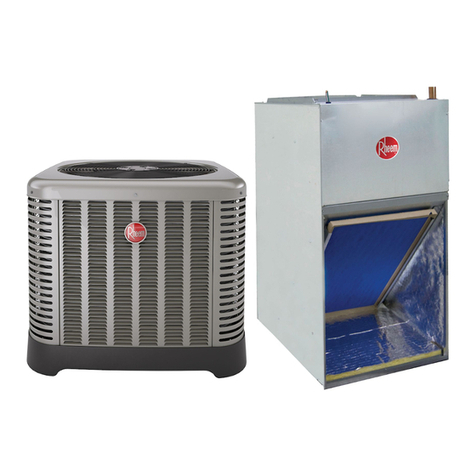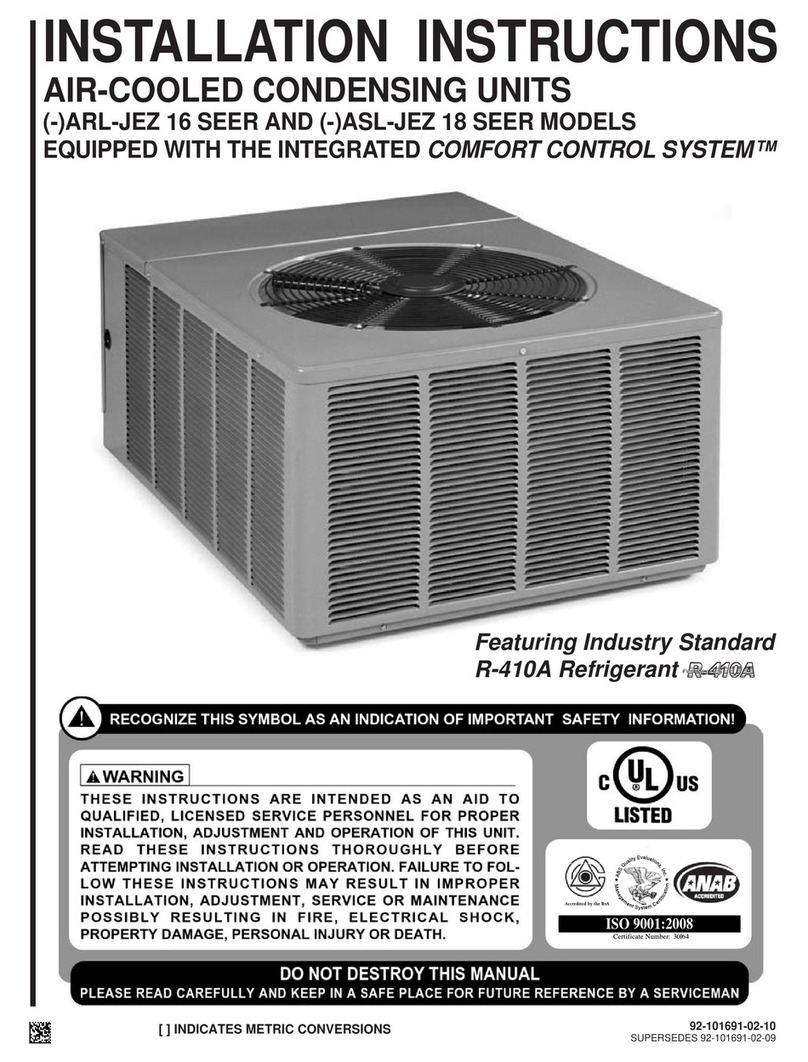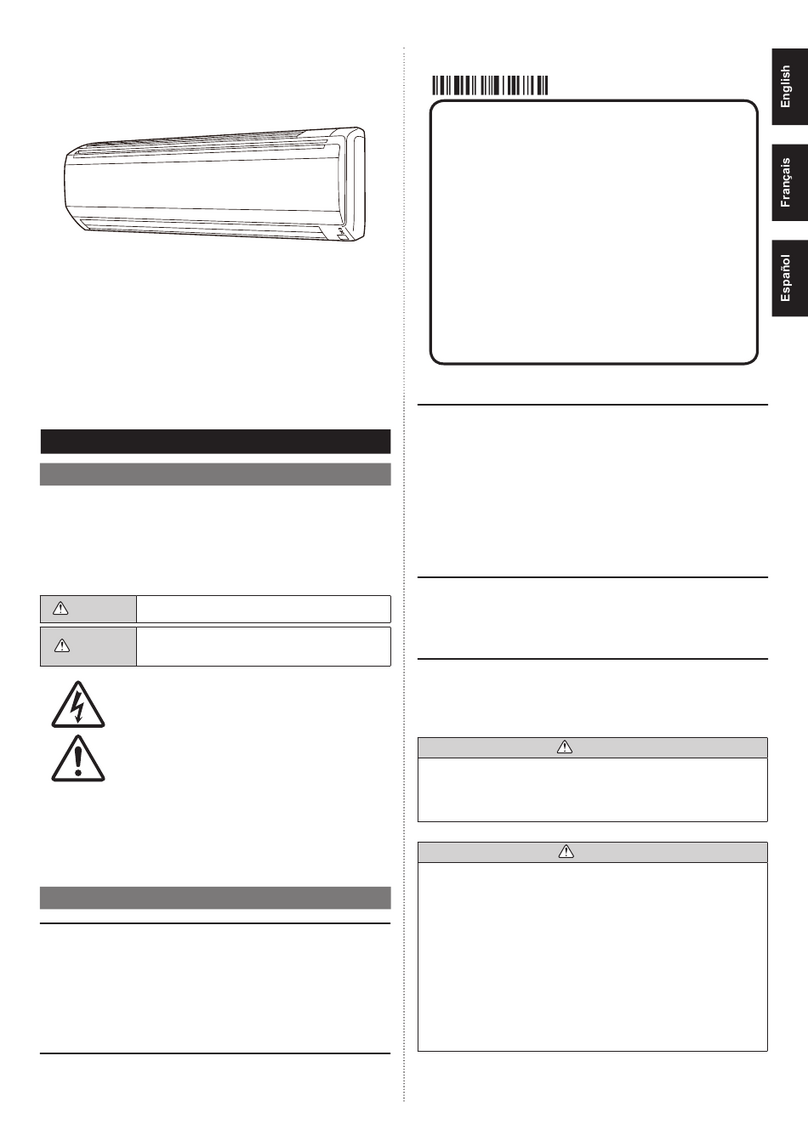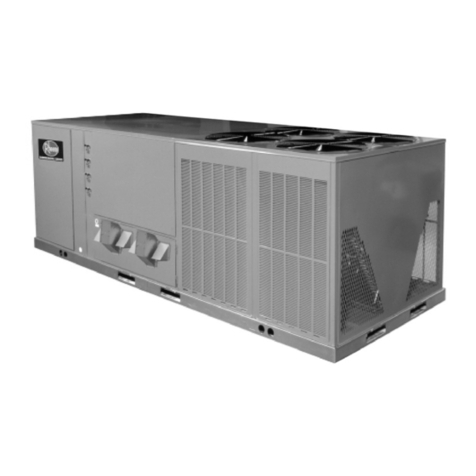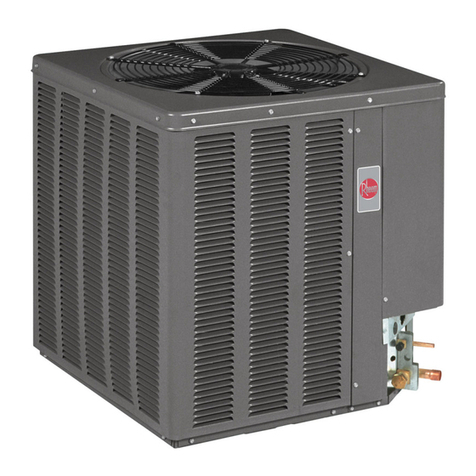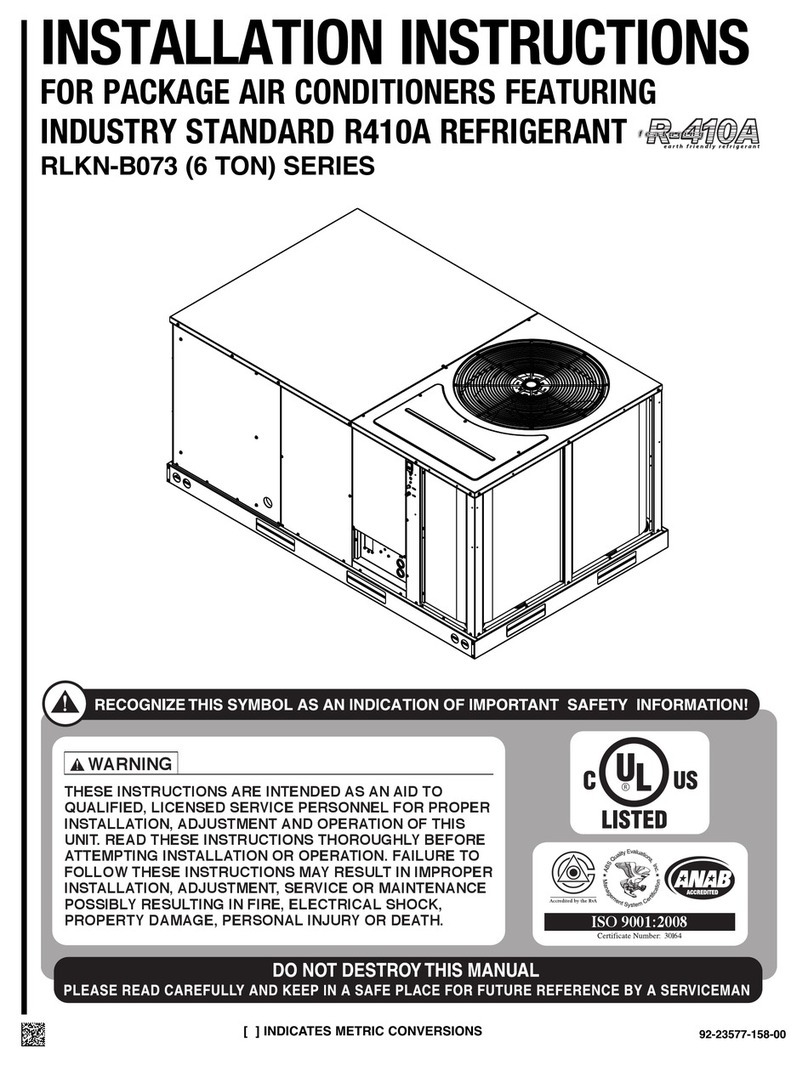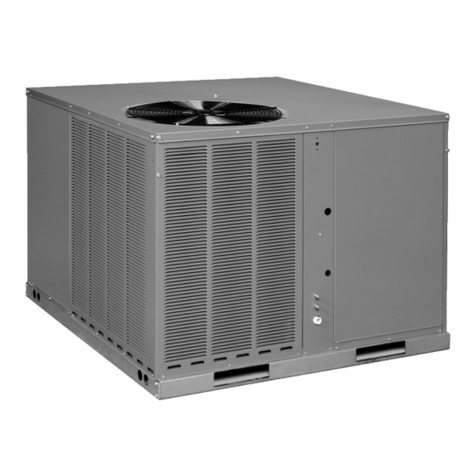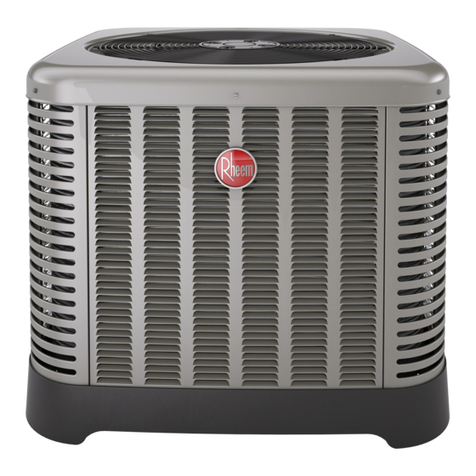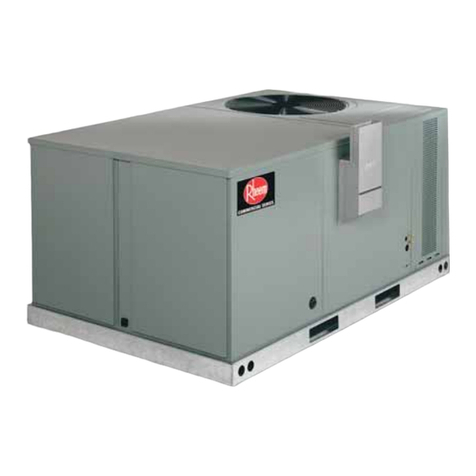
4
REQUIREMENTS & CODES
• All electrical wiring must be completed in accordance with
local, state & national codes and regulations and with the
National Electric Code (ANSI/NFPA 70) or in Canada the
Canadian Electric Code Part 1 CSA C.22.1.
• The installer must comply with all local codes and regulations
which govern the installation of this type of equipment.
Local codes and regulations take precedence over any
recommendations contained in these instructions. Consult
local building codes and the National Electrical Code (ANSI
CI) for special installation requirements.
• Air Ducts must be installed in accordance with the standards
of the National Fire Protection Association “Standards for
Installation of Air Conditioning and Ventilation Systems” (NFPA
90A), “Standard for Installation of Residence Type Warm Air
Heating and Air Conditioning Systems” (NFPA 90B), these
instructions, and all applicable local codes.
• Consult Table 2, (page 9) and the rating plate for the
proper circulating air flow and temperature rise. It is important
that the duct system be designed to provide the correct flow
rates and external pressure rise. An improperly designed
duct system can result in nuisance shutdowns, and comfort
or noise issues.
• This unit is designed for outdoor installations only and should
be positioned as shown in Locating the Heat Pump section.
GENERAL INFORMATION
This packaged air conditioner is designed only for outdoor ground
level installations and can be readily connected to the high static
duct system of a home. This unit is completely assembled, wired,
and run tested at the factory. The only connections needed
for installation are the supply and return ducts, line voltage,
thermostat wiring and the condensate drain.
This unit has been tested for capacity and efficiency in
accordance with AHRI standards and will provide many years
of safe and dependable comfort, providing it is properly installed
and maintained. Use of components other than those specified
may invalidate AHRI Certification, Code Agency Listing, and
limited warranty on the air conditioner.
Before You Install this Unit
√The cooling load of the area to be conditioned must be
calculated and a system of the proper capacity selected. It is
recommended that the area to be conditioned be completely
insulated and vapor sealed.
√Check the electrical supply and verify the power supply is
adequate for unit operation. If there is any question concerning
the power supply, contact the local power company.
√All units are securely packed at the time of shipment and
upon arrival should be carefully inspected for damage prior
to installing the equipment at the job site. Verify coil fins are
straight. If necessary, comb fins to remove flattened or bent
fins. Claims for damage (apparent or concealed) should be
filed immediately with the carrier.
√Please consult your dealer for maintenance information
and availability of maintenance contracts. Please read all
instructions before installing the unit.
Locating the Air Conditioner
• Survey the job site to determine the best location for mounting
the outdoor unit. Select a solid, level position, preferably on
a concrete slab, slightly above the grade level, and parallel
to the home. If possible, select a site for the unit that is as
close as possible to the proposed return grille location. Unit
dimensions are shown in Figure 9 & Table 3, (page 11).
DO NOT PLACE UNIT UNDER THE HOME.
• The unit should be located with consideration of minimizing
the length of the supply and return ducts. If practical, place
24"
12"
24"
72” CLEARANCE
FROM TOP
OF UNIT
0"
Figure 1. Minimum Unit Clearances
the air conditioner and its ducts in an area where they will be
shaded from the afternoon sun, when the heat load is greatest.
• The length of the supply and return ducts should be kept to
a minimum with no sharp radius bends.
• Consideration should also be given to availability of electric
power, service access, noise, and shade.
• Overhead obstructions, poorly ventilated areas, and areas
subject to accumulation of debris should be avoided. The
hot condenser air must be discharged up and away from the
home, and if possible, in a direction with the prevailing wind.
Do not place the unit in a confined space. See Figure 9 &
Table 3, (page 11) for unit dimensions.
Minimum Clearance Requirements
Sufficient clearance for unobstructed airflow through the outdoor
coil must be maintained in order to provide room for proper
servicing and achieve rated performance. However, 36” inches
from blower access panel, control access panel, and front panel is
highly recommended for servicing and maintenance. See Figure
1for minimum clearances to obstructions. DO NOT install unit in
a confined or recessed area that will allow discharge air from the
unit to re-circulate into the condenser air inlet, through the coil.
Service Access Clearances
Blower access panel side...................................................24”
Electrical compartment access panel side .........................24”
Clearance from top of unit ..................................................72”
Clearance around condenser coil area to wall or
shrubs (excludes duct panel side)......................................12”
Clearances to Combustible Materials
Supply and return air ducts................................................... 0”
Duct connection side ............................................................ 0”
Combustible base - wood or class A, B, or C roof
covering material .................................................................. 0”
Air Duct System
Air ducts must be installed in accordance with the standards of
the National Fire Protection Association “Standard for Installation
of Air Conditioning and Ventilation Systems” (NFPA 90A),
“Standard for Installation of Residence Type Warm Air Heating
and Air Conditioning Systems” (NFPA 90B), these instructions,
and all applicable codes. NFPA publications are available by
writing to: National Fire Protection Association, Batterymarch
Park, Quincy, ME 02269 or visit www.NFPA.org on the web.
• Design the duct work according to methods described by the
Air Conditioning Contractors of America (ACCA).
• The supply duct system, including the number and type of
registers, will have much more effect on the performance of
the system than any other factor. The duct must be sufficiently
large to conduct an adequate amount of air to each register.
See Figure 2 (page 5).
